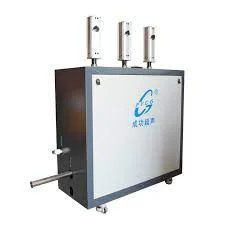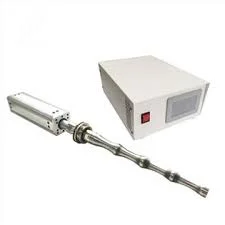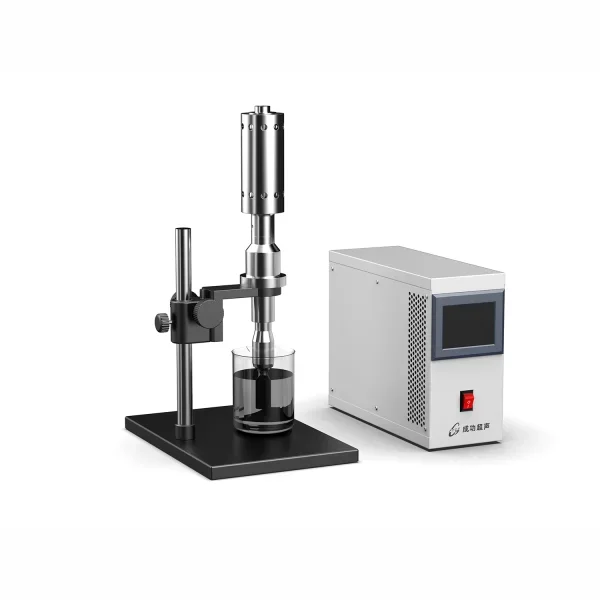In the realm of liquid processing, ultrasonic sonochemistry machines have emerged as a powerful tool for enhancing chemical reactions, dispersing particles, and improving overall process efficiency. These machines utilize the principles of ultrasonic waves to generate cavitation in liquids, resulting in intense mixing and homogenization. In this blog, we will explore how ultrasonic sonochemistry machines work, shedding light on their applications and benefits in liquid processing.
Understanding Ultrasonic Sonochemistry
Ultrasonic sonochemistry is a branch of science that focuses on the application of ultrasound waves to enhance chemical reactions and assist in various liquid processing operations. Ultrasonic waves, with frequencies above the human audible range (typically above 20 kHz), are used to induce cavitation in liquids. Cavitation refers to the formation, growth, and collapse of microscopic bubbles in a liquid medium. The violent collapse of these bubbles generates intense shear forces and localized high temperatures, leading to enhanced mixing, emulsification, and chemical reactions.

Principles of Ultrasonic Sonochemistry Machines
Ultrasonic sonochemistry machines consist of a generator that produces high-frequency electrical signals and a transducer that converts these signals into ultrasonic waves. The transducer is immersed in the liquid medium, and the ultrasonic waves propagate through it. As the waves pass through the liquid, they create alternating high-pressure and low-pressure zones, inducing cavitation.
Cavitation and Acoustic Streaming
Cavitation is the key phenomenon in ultrasonic sonochemistry machines. When an ultrasonic wave passes through a liquid, it causes rapid expansion and contraction of the liquid, creating low-pressure areas. If the pressure drops below the vapor pressure of the liquid, small vapor-filled cavities, also known as "bubbles," are formed. As the pressure increases in the subsequent high-pressure zone, these bubbles collapse violently, creating localized shockwaves, high temperatures, and intense shear forces. This phenomenon is known as inertial cavitation.
In addition to cavitation, ultrasonic sonochemistry machines also induce another phenomenon called "acoustic streaming." Acoustic streaming refers to the steady flow or circulation of liquid caused by the interaction of ultrasonic waves with the liquid. This streaming effect enhances the mixing and mass transfer processes within the liquid, further improving the efficiency of liquid processing.

![]()
Applications of Ultrasonic Sonochemistry Machines
Ultrasonic sonochemistry machines find applications in various industries and liquid processing operations, including:
Homogenization and Emulsification: Ultrasonic waves effectively disperse and homogenize immiscible liquids, creating stable emulsions and suspensions. This is particularly useful in the food, pharmaceutical, and cosmetic industries for producing creams, lotions, sauces, and other products.
Particle Size Reduction: Ultrasonic sonochemistry machines facilitate the micronization and deagglomeration of particles, improving their dispersibility and bioavailability. This is valuable in industries such as pharmaceuticals, coatings, and pigments.
Chemical Reactions: Ultrasonic waves enhance chemical reactions by increasing the collision frequency and energy of reactant molecules. This is beneficial in various fields, including organic synthesis, biodiesel production, and wastewater treatment.
Extraction and Degassing: Ultrasonic sonochemistry machines assist in the extraction of bioactive compounds from plant materials and the removal of dissolved gases from liquids, as in the degassing of solvents and water treatment processes.
Cleaning and Surface Modification: The cavitation and acoustic streaming generated by ultrasonic sonochemistry machines aid in the removal of contaminants from surfaces, as well as the cleaning and surface modification of materials in industries such as electronics, optics, and automotive.
Benefits of Ultrasonic Sonochemistry Machines
Ultrasonic sonochemistry machines offer several advantages that make them a preferred choice for liquid processing:
Increased Efficiency: The intense mixing, emulsification, and chemical reactions achieved through cavitation and acoustic streaming significantly enhance process efficiency, reducing processing times and energy consumption.
Precise Control: Ultrasonic sonochemistry machines provide precise control over process parameters, such as frequency, power, and duration, allowing customization to suit specific applications.
Scalability: These machines can be easily scaled up or down to accommodate different processing volumes, making them suitable for laboratory-scale experiments as well as large-scale industrial production.
Non-contact and Non-invasive: Ultrasonic sonochemistry machines operate without direct contact with the liquid, minimizing contamination risks and allowing for easy
cleaning and maintenance.
Environmentally Friendly: The intense mixing and enhanced reactions achieved by ultrasonic sonochemistry machines often eliminate the need for harsh chemicals or high temperatures, making them environmentally friendly alternatives.

Conclusion
Ultrasonic sonochemistry machines have revolutionized liquid processing by harnessing the power of ultrasonic waves to induce cavitation and acoustic streaming. These machines find applications across various industries, from enhancing chemical reactions to achieving efficient homogenization, emulsification, and particle size reduction. As a result, they offer numerous benefits, including increased process efficiency, precisecontrol, scalability, and environmental friendliness. The use of ultrasonic sonochemistry machines continues to grow, as industries recognize their potential for improving liquid processing operations.
